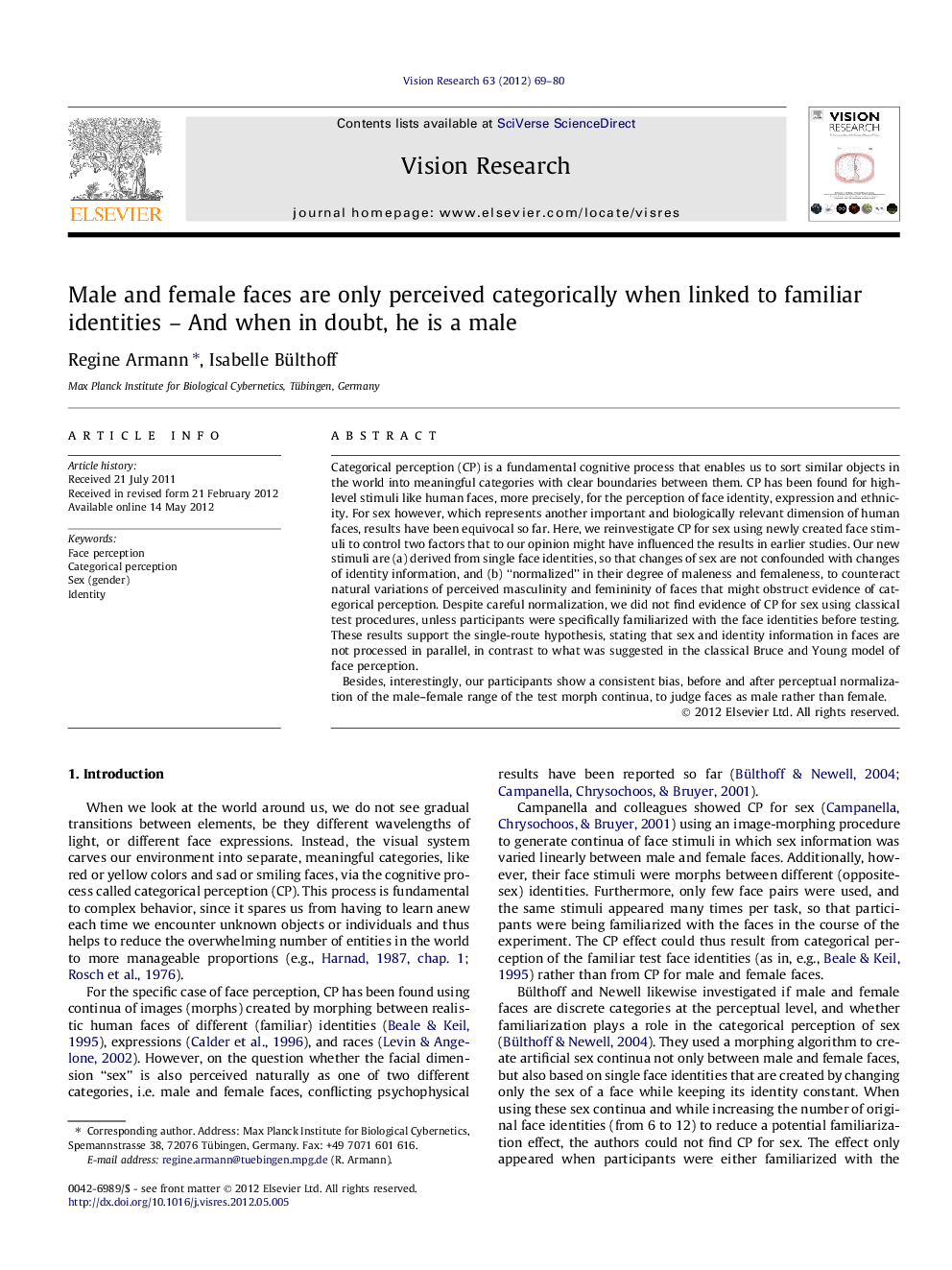| Article ID | Journal | Published Year | Pages | File Type |
|---|---|---|---|---|
| 4033997 | Vision Research | 2012 | 12 Pages |
Categorical perception (CP) is a fundamental cognitive process that enables us to sort similar objects in the world into meaningful categories with clear boundaries between them. CP has been found for high-level stimuli like human faces, more precisely, for the perception of face identity, expression and ethnicity. For sex however, which represents another important and biologically relevant dimension of human faces, results have been equivocal so far. Here, we reinvestigate CP for sex using newly created face stimuli to control two factors that to our opinion might have influenced the results in earlier studies. Our new stimuli are (a) derived from single face identities, so that changes of sex are not confounded with changes of identity information, and (b) “normalized” in their degree of maleness and femaleness, to counteract natural variations of perceived masculinity and femininity of faces that might obstruct evidence of categorical perception. Despite careful normalization, we did not find evidence of CP for sex using classical test procedures, unless participants were specifically familiarized with the face identities before testing. These results support the single-route hypothesis, stating that sex and identity information in faces are not processed in parallel, in contrast to what was suggested in the classical Bruce and Young model of face perception.Besides, interestingly, our participants show a consistent bias, before and after perceptual normalization of the male–female range of the test morph continua, to judge faces as male rather than female.
► Face identity, race, expression are perceived categorically; for sex, results are conflicting. ► We create new better controlled stimuli (symmetrical range from male to female) and control for familiarity. ► No naturally occurring CP for sex; processing of sex linked to identity. ► Consistent male bias when judging sex, even for perceptually unambiguous stimuli.
